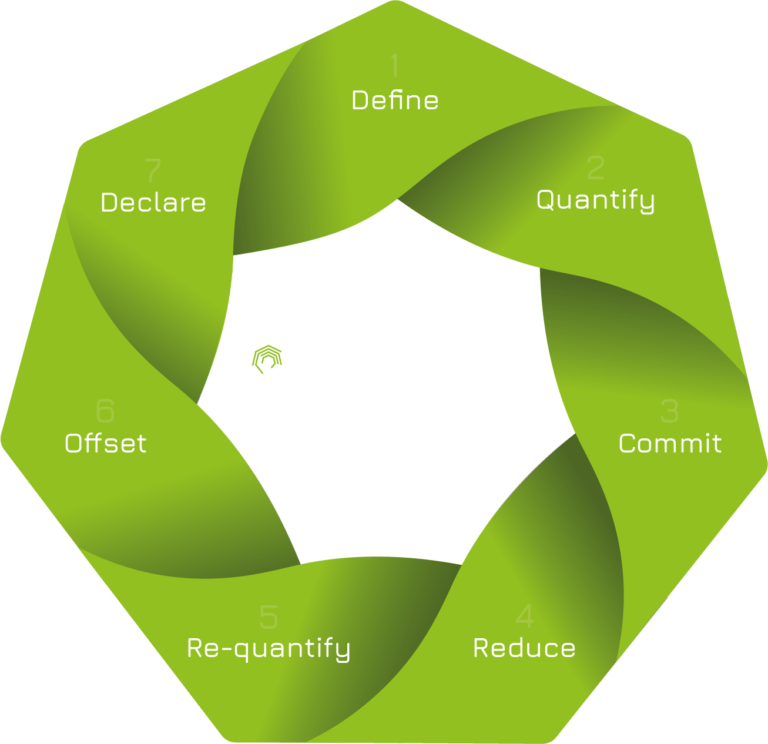Businesses across the globe are striving for carbon neutrality, driven by the increasing urgency to combat climate change and meet sustainability goals. A significant aspect of this commitment involves managing greenhouse gas (GHG) emissions produced within the supply chain, known as Scope 3 emissions. As Scope 3 emissions tend to be the most complex and challenging to measure, monitor, and reduce, many organisations find it difficult to accurately quantify their impact and devise effective reduction strategies.
Scope 3 emissions are those that originate from the entire life cycle of a company’s operations, including upstream and downstream activities. Typically, these emissions are not directly controlled by the company but result from actions such as procuring materials, producing goods, transporting products, and disposing of waste. Due to their dispersed nature and the often complex web of relationships between suppliers, manufacturers, and other supply chain partners, Scope 3 emissions can be challenging to quantify. Nevertheless, accurately accounting for and reducing these emissions is critical for organisations aligning with international standards such as ISO 14064 (carbon verification) and PAS 2060 (carbon neutrality).
This comprehensive guide will provide readers with indispensable knowledge surrounding Scope 3 emissions management, encompassing topics such as measuring and monitoring supply chain emissions, engaging key stakeholders, and implementing innovative reduction strategies. By enhancing their understanding of this crucial aspect of sustainability, readers will be better equipped to incorporate effective supply chain emissions management practices into their long-term carbon strategy, fostering a healthier planet for future generations.
Measuring and Monitoring Supply Chain Emissions
Accurate measurement and monitoring of Scope 3 emissions are essential for identifying areas of inefficiency and implementing targeted reduction strategies. To establish a robust emissions management framework, several steps must be taken:
1. Identify Emission Sources: Begin by mapping out the entire supply chain and identifying all upstream and downstream emission sources. This includes emissions from raw material extraction, manufacturing processes, transportation, use-phase management, and end-of-life disposal.
2. Collect Data: Collaborate with suppliers, stakeholders, and third-party data providers to gather relevant emissions data. Effective communication and transparency across the supply chain are crucial to ensure accuracy and consistency in emissions reporting.
3. Calculate Emissions: Use standardised methodologies, such as The Greenhouse Gas (GHG) Protocol or ISO 14064, to calculate emissions. Employ appropriate emission factors and conversion rates to ensure consistency, comparability, and credibility of the emissions data.
4. Monitor Trends: Regularly track emissions data over time, observe trends and patterns to identify areas that require improvement, and measure the success of implemented reduction strategies.
Engaging Key Stakeholders
Collaboration between stakeholders is essential for driving meaningful change across the supply chain. By engaging with suppliers, partners, and customers in environmental initiatives, businesses can inspire shared responsibility in emissions reduction and collectively work towards carbon neutrality. Some strategies to enable stakeholder collaboration include:
1. Establish Clear Expectations: Clearly articulate your organisation’s environmental objectives and expectations to all stakeholders. Develop environmental guidelines and supplier codes of conduct that outline specific requirements related to emissions reduction and sustainable practices.
2. Build Strong Supplier Relationships: Establish open communication channels and provide regular feedback on supplier performance. Invest in building a collaborative relationship with suppliers to help them comply with your environmental standards and proactively seek emissions reduction opportunities.
3. Share Knowledge and Expertise: Share best practices and offer educational resources or training to help suppliers improve their environmental performance. Foster a culture of learning and innovation by providing platforms for stakeholders to exchange knowledge, experiences, and ideas related to sustainability.
Implementing Innovative Reduction Strategies
There is no one-size-fits-all approach to reducing supply chain emissions, as each organisation has unique challenges and opportunities. However, several innovative strategies can help drive significant emissions reductions across the supply chain:
1. Opt for Greener Materials: Analyse the emissions associated with various materials used in your products and services, and consider alternatives with lower environmental impacts.
2. Prioritise Energy Efficiency: Collaborate with suppliers to implement energy-efficient technologies and practices throughout the supply chain, effectively reducing emission intensity during the manufacturing, distribution, and end-use phases.
3. Transition to Renewable Energy: Encourage suppliers to switch to renewable energy sources, such as solar, wind, and hydroelectric power, to reduce their emissions from electricity consumption.
4. Enhance Transportation Efficiency: Optimise transportation networks and modes, encourage fuel-efficient transport options and reduce the distance travelled between suppliers and customers.
Mitigating Emissions with Offsetting
While businesses should prioritise reducing their supply chain emissions, some remaining emissions may be unavoidable. Carbon offsetting is a viable strategy to mitigate these residual emissions by investing in projects that remove or reduce GHG emissions, such as renewable energy installations, reforestation programmes, and support for energy-efficiency initiatives.
Conclusion
Managing supply chain emissions is a crucial component of achieving carbon neutrality and aligning with international standards like ISO 14064 and PAS 2060. By accurately measuring and monitoring Scope 3 emissions, engaging key stakeholders, and implementing innovative reduction strategies, businesses can significantly improve their environmental performance while contributing to the global fight against climate change. With this in-depth guide, organisations are well-equipped to embark on their journey towards carbon-neutral supply chains, fostering a sustainable and thriving future for generations to come.
Are you looking for a team of carbon compliance specialists who are passionate about what they do and not afraid to be different? Look no further than Carbonology! As leaders in our field, we stand out from the crowd by not following the status quo. Our passion for continual improvement drives innovation and has led us to become unrivalled experts in carbon standards. With our expertise, we can help your business navigate the complex world of carbon standards and ensure that you’re doing your part to reduce your carbon footprint. Don’t settle for anything less than the best – contact Carbonology today and let us help you become a leader in your industry!

